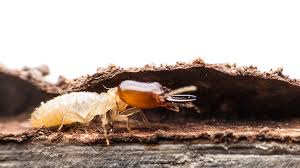Excitement About Termite Control With Orange Oil
Since the approaches, their costs and efficiency changes depending on the species. You can learn more about the termite types above.Subterranean Termites DIY Treatment Methods1 ) Chemical ExterminationLiquid Termiticides, if applied properly can be successful in treating Subterranean termites. Application of such chemicals can obstruct the passage of termites in to a home, and restrict access to dirt for termites already in your home which they need for moisture.But only a word of warning; their application is not feasible for everyone depending on the house. Application of these liquid termiticides in the dirt can often require drilling of wood and concrete slabs.
If even a tiny bit of space is not properly covered then anticipate some unwanted traffic to your residence soon. Bear in mind, termites are extremely tiny insects. And there colonies can travel through a distance as wide as a pencil.An typical termiticide treatment can last from 5-8 decades. It can take around 20 oz of dilute termidor to deal with 60 linear feet of area.
Rumored Buzz on Termite Control With Imidacloprid
These baiting systems work more efficiently when the termite colonies feed on the bait as a major food supply. Think of it as a virus. Once an infected termite gets in contact with others, it multiplies its victims extensively.How perform Termite Baits workTermite baits consists of cardboard, wood or any other okay termite-food poisoned with a chemical lethal to termites.
This is essential for two reasons; one being that we want the information of new food-source handed to other termites. Second, the transmission of poison could effect a much larger target, even the ones which never fed on the bait. A good termite bait system can cost you around $500. Drywood Termites DIY Treatment:Drywood termites make their colonies in wood structures, unlike subterranean termites.

The goal here is to ensure the poisonous material is in reach of termites. You can tell youve reached the termite gallery when you need to use less pressure whilst drilling.Dampwood Termites DIY TreatmentDampwood termites are greatest in size, and live in rotten structures that have high moisture conditions.
The 9-Minute Rule for Termite Control With Orange Oil
And the majority of the times their presence indicates an unusual source of moisture. These can be plumbing defaults, lack of ventilation, inferior drains or construction made in a means that gives too much contact with dirt. The best practice to take out dampwood termites in your house is to identify and remove the moisture resources that are necessary for dampwood termite survival.Frequently Asked Questiondo termites flyNot all termites can fly, but termite colonies can create flying termites during a termite swarm. A termite swarm is the season when well-built termite colonies replicate to make new termite colonies.
Nature provides the new-born termites wings, which means that they may fly and find themselves a new house. When termites find a new residence and partner with their partners. The wings drop off.Flying-termites are normally confused with flying-ants. You can tell the difference by closely examining their bodily appearance. Termite wings are of equivalent dimensions while ants have unequal wings. And ant antennae bend 90 degrees while termite antennae are straight.where do termites liveTermites have many kinds.
Subterranean termites, being the most common live in the soil. The produce mud-tubes to travel to meals sources.On other hand, drywood termites like to reside in the timber, theyre feasting on. These can include your furniture, wooden-house structures, cardboards or any thing that suits their hunger for cellulose.The third kind is dampwood termites.
Dampwood termites are a lot bigger in size in visit this site comparison to other termites. They need a lot of moisture to live, more than an ordinary home provides. That is the reason why there colonies are barely found inside homes.how long termites liveTermites are tough insects, considering their colonies become attacked by predators and fungi.
10 Simple Techniques For Termite Control Without Chemicals
The Queen in a colony, achieves the longest life. Since, everyone in it shields the queen. Studies have found a termite queen can live up to 20 years.Whereas the soldiers and workers are not that lucky. Both normally live up to two decades. When required the whole colony puts their own life at stake for your queen. The termites rescue the Queen and the Queen conserves the colony.